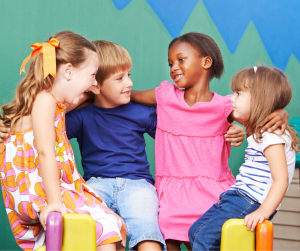In a world that often bombards us with unrealistic beauty standards and body images, instilling a sense of body positivity in children has never been more important. As parents, caregivers, and educators, our role in fostering a healthy relationship between kids and their bodies is paramount. Here are some ways that my family discusses body positivity.
Understanding Body Positivity in Kids
Body positivity is not just a concept reserved for adults; it extends to children, too. It’s about teaching kids to appreciate and love their bodies for what they can do. It’s important that kids understand that appearance is not everything. Embracing body positivity involves several different things. By fostering self-acceptance, promoting a diverse representation of bodies, and encouraging a healthy relationship with food and physical activity.

Key Factors Influencing Body Image in Kids
- Media Influence: Children are exposed to a myriad of images through media channels, and it’s essential to guide them in interpreting these messages critically. Emphasize the diversity of bodies and challenge unrealistic portrayals.
- Peer Comparisons: Kids often compare themselves to their peers, which can impact their self-esteem. Encourage inclusivity and teach children that everyone is unique and special in their own way.
- Family Environment: The language we use, the attitudes we display, and the values we emphasize at home significantly influence a child’s body image. Create a supportive and loving environment that celebrates differences.
Practical Tips for Fostering Body Positivity
- Encourage Positive Self-Talk: Teach children to speak kindly to themselves. Encourage affirmations that focus on their abilities, kindness, and uniqueness.
- Promote Healthy Habits: Emphasize the importance of staying active and eating a balanced diet for overall well-being rather than focusing solely on appearance. Frame discussions about food and exercise in terms of health and energy.
- Celebrate Diversity: Expose children to diverse representations of bodies in literature, media, and real life. Highlight the beauty in differences and emphasize that there is no one-size-fits-all standard for beauty.
- Avoid Negative Comments: Be mindful of the language you use when discussing bodies, whether it’s your child’s body or your own. Avoid negative comments about weight or appearance and focus on the positive aspects of character and personality.
- Teach Media Literacy: Help children develop critical thinking skills when it comes to media. Discuss how images are often edited and manipulated and emphasize that real beauty comes in all shapes, sizes, and colors.

Nurturing body positivity in kids is an ongoing process that requires open communication, positive reinforcement, and leading by example. By instilling a strong sense of self-worth, celebrating diversity, and promoting a healthy relationship with their bodies, we can empower the next generation to embrace their uniqueness and radiate confidence from within. Being kind to ourselves in front of our children (and behind closed doors) makes more of an impact than what we may think. Let’s work together to create a world where every child feels comfortable, confident, and proud of the skin they’re in.










